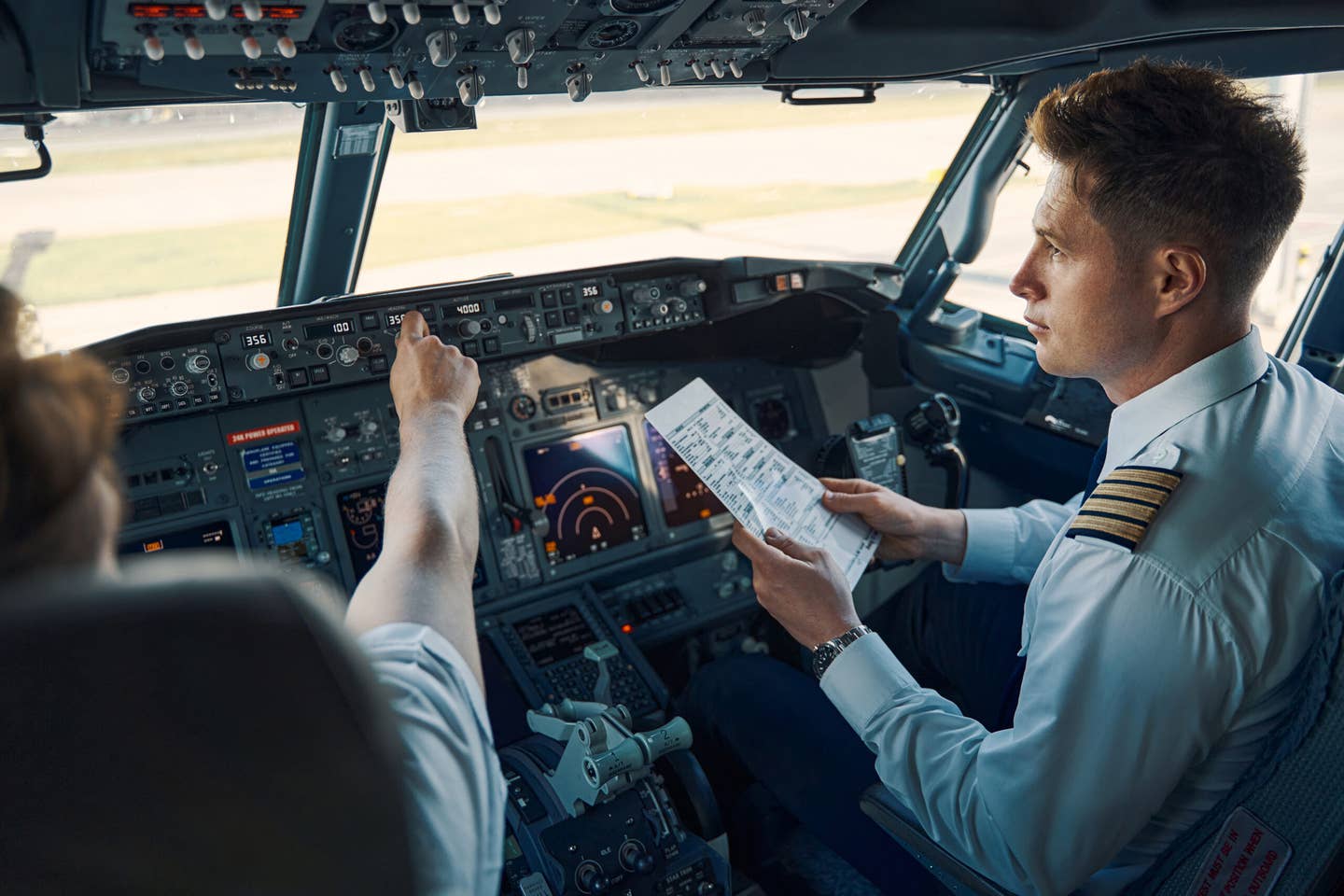
American Airlines recently introduced its pilots to revised standard operating procedures through a 36-page bulletin. [Credit: iStock]
From this retired pilot’s perspective, albeit a bit biased, American Airlines is a class act. Why? For many reasons. But for the purpose of this discussion, the airline is a class act because of the caliber of its flight crews. From line pilots to check airmen to management pilots, safety is the primary focus and the focus of producing a quality product in the form of a well-trained flight crew. But, like all airlines, occasions arise where stumbling occurs. American Airlines stumbled. Big time. How?
The carrier introduced major standard operational procedure (SOP) revisions deemed “Fleet Harmonization.” What does that mean exactly? American Airlines operates a wide range of aircraft, with pilots transitioning to new equipment frequently because of the current attrition and hiring environment. Although each airplane has its procedural idiosyncrasies, many of the SOPs are generic and can be shared among all fleets. Other than the obvious aircraft systems differences, generic SOPs afford pilots an easier transition to a new airplane because they are already familiar with most of the procedures.
Fleet harmonization is a great concept in that it reduces the awkward confusion involved with mixing the procedures from flying the former airplane with the current airplane. It certainly enhances safety in the cockpit. But harmonization can be an extensive transformation, especially when its primary goal is to mitigate risk during vulnerable phases of flight like takeoff, approach, and landing.
After a review of the B-737 harmonization changes, it was painfully obvious that the assimilation of these new SOPs requires not only a concerted effort of pilot study, but also repetition to develop proficiency. Some areas affected by the revisions are manipulation of flaps and gear, management of navigation systems and mode control panel operations, takeoff and landing callouts, approach procedures below 1,000 feet, category II/III operations, go-around callouts, pushback operations, PA announcements, and more.
How was this major fleet harmonization revision presented to line pilots? Via a 36-page bulletin. Yup. No simulator training. No ground school. No online distance learning. Just read the bulletin and integrate the new SOPs into a revenue flight. The bulletin was published for line pilot review on December 5 with an incorporation date of January 3, 2023—less than one month, the holiday season notwithstanding.
Check airmen, the pilots assigned to maintain airline and FAA standards, were briefed without much advance notification of the fleet harmonization strategy. Although subject matter experts (SME) contributed to the task, check airmen were never offered an opportunity to provide input or critique a comprehensive revision that changes operational culture. This is not to say that detailed evaluations, reasoning, and analysis weren’t part of the consideration. It is evident through the bulletin’s verbiage that indeed, this was baked into the development process.
The pilots’ union, the Allied Pilots Association (APA), advocates for the fleet harmonization strategy but considers its implementation, well…reckless. If line pilots aren’t going to be given an opportunity to demonstrate the procedures during their next 12-month recurrent training, with the implementation complete after everyone cycles through, then why not consider online distance learning? Distance learning would at least provide a record of the review. In a letter to the VP of Flight, the APA president indicated that distance learning is required for such circumstances under the auspices of the collective bargaining agreement.
Adding to the confusion of the January 3 fleet harmonization rollout was an ambiguous letter sent January1 from upper-level pilot management that implied soft implementation was the plan. Pilots could utilize a mixture of old and new SOPs on their trips, and perfection wasn’t expected or required. The resources of flight training, flight operations, and domicile chief pilots would provide support in the transition.
In contradiction to the letter, apparently, one chief pilot took issue with a captain who delayed a flight at the gate while briefing the new SOPs with his crew. When the captain offered the option of either departing when he deemed the flight safe or finding someone else to fill the left seat, the chief pilot obliged him with removal without pay. Although the financial situation was rectified to some degree, nothing rallies the rank and file like a pilot taking a righteous stand.
But wait, there’s more. Despite APA’s adamant implementation objection, the airline’s FAA principal operating inspector (POI) has approved and endorsed the bulletin.
Quite frankly, I am disappointed in my former employer. Had the revisions been a handful of minor changes, a bulletin would have sufficed. But these are significant and profound operational concerns that even the bulletin acknowledges are instituted to mitigate risk during vulnerable phases of flight, which seems rather ironic. Not utilizing formal training options implies that finances are the driving force.
After discussing this subject with a friend and former check airman still flying for the airline, we had the same pragmatic approach to the situation. Rather than delay a flight because of a lack of proficiency with the new SOPs, operate the trip with the old procedures that are still deemed safe.
Mixing the familiar with the unfamiliar seems like a recipe for disaster, especially if a marginal weather environment is involved. Considering the runway incursion event on January 13 at JFK [International Airport] that involved a Delta 737 aborting for an American Airlines 777 that crossed a runway at the wrong time, the infamous bulletin may have been a factor.
Please, American Airlines, show me you’re still a class act. Institute the better solution. Even though I don’t have a seat in the cockpit, I am a concerned passenger.

Subscribe to Our Newsletter
Get the latest FLYING stories delivered directly to your inbox






